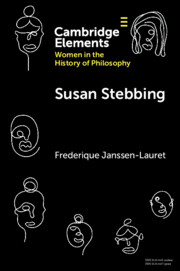Element contents
Susan Stebbing
Published online by Cambridge University Press: 18 November 2022
Summary
- Type
- Element
- Information
- Online ISBN: 9781009026925Publisher: Cambridge University PressPrint publication: 15 December 2022
References
- 12
- Cited by

